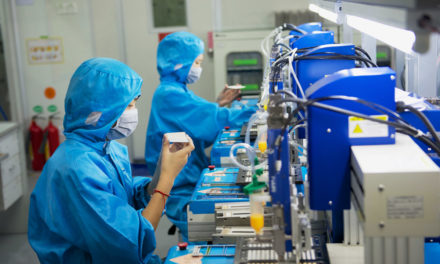By Nigel J Smart PhD, SMART Pharmaceutical Consulting
The goal of Lean Manufacturing is to create value through the elimination of waste and the streamlining of operational tasks. However, as we approach the end of the second decade of the 21st century, we are feeling the effects of what’s frequently termed the next or fourth Industrial Revolution.
This is where our principles of process excellence are being melded with the integration of multiple “Smart devices”, to bring about the next level of process improvement and reliability.
For Pharmaceutical Manufacturing, this is ground breaking, as it reduces and /or eliminates the probability of efficiency and quality compliance issues, through the adoption of fully electronic solutions.
Ideally, management of well understood repetitive production associated actions should occur autonomously (or automatically), without management intervention. For efficiency, the preference would always be for technical actions to occur without human intervention via device to device interaction. In achieving this the major cause of errors and inefficiencies (the human element), would be avoided and provided there is appropriate calibration and preventive maintenance, the operation should run smoothly and reliably.
This “Internet of Things” (IoT), as its come to be called creates production operations that are inherently “Smart” and which enable manufacturing agility that was previously absent for pharmaceutical manufacturing.
With these improvements, Lean principles such as those associated with PULL strategies have become highly relevant in the new process layouts for manufacturing pharmaceuticals. What’s required to produce the nirvana syndrome for efficiency, is a series of flexible and scalable PULL approaches working in concert. Today, although many manufacturers have quite elaborate IT infrastructure solutions, very few have taken the next step in properly integrating these to generate an enhanced system.
In advocating for these types of network solutions, what one envisages is a CNS/brain type backbone with various sub-component nervous system like axions which services various functionalities autonomously. Thinking big, one might develop multiple sub-domain PULL systems for associated systems such as QA/QC. Maintenance, Calibration and Know ‘how, so that the various “touch points” interact continuously, providing oversight management of the whole production process.
Monitoring this through sophisticated real-time dashboards could provide a welcome opportunity to truly “manage” resources and optimize production. With these types of approaches in action, we start to operate in the zone of true SMART-PULL territory and if we now consider blending in additional possibilities such as artificial intelligence, then we open the possibilities of seamlessly manipulating our SMART -PULL environment to
previously unforeseen opportunities. Included in these would be significant gains in process capability outcomes, cost and quality compliance. With these in place, we would see the arrival of the “Brilliant Factory.”





